Tibetan medicine
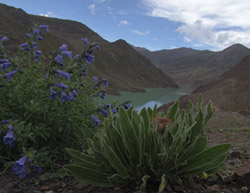 Tibetan region is spread in the highest Himalayan Mountains . In middle ages it was a powerful kingdom, which controlled Great Silk Road and contributed much to the worldwide culture. The initiator of Tibetan medicine is 32 nd king of Tibet Trisong Detsen Gampo (617- 649). His both wives – Chinese and Nepalese princesses – were from Buddhist countries and converted to Buddhism their husband – the king of Tibet . During the reign of this king Tibetan written language appeared and translation of medicine books in Tibetan language started. In this way, Tibetan medicine adopted the knowledge about diseases and their medical treatment from the books of Indian medical treatment science Ayurveda, and the art of pulse diagnostics and the teaching of five elements – from Chinese medicine. Also Tibetan medicine was influences by Greek-Roman and Arabian medicine.
Tibetan region is spread in the highest Himalayan Mountains . In middle ages it was a powerful kingdom, which controlled Great Silk Road and contributed much to the worldwide culture. The initiator of Tibetan medicine is 32 nd king of Tibet Trisong Detsen Gampo (617- 649). His both wives – Chinese and Nepalese princesses – were from Buddhist countries and converted to Buddhism their husband – the king of Tibet . During the reign of this king Tibetan written language appeared and translation of medicine books in Tibetan language started. In this way, Tibetan medicine adopted the knowledge about diseases and their medical treatment from the books of Indian medical treatment science Ayurveda, and the art of pulse diagnostics and the teaching of five elements – from Chinese medicine. Also Tibetan medicine was influences by Greek-Roman and Arabian medicine.
Medicine in Tibet was for all times inalienable from Buddhist religion. That is why more often doctors-Tibetans are lamas-monks. Medical teaching was not a taboo for women also. Many famous scientists in middle ages were women. Hospitals and pharmacies were situated near the monasteries, and in the largest monasteries medical universities were established. The strong connection with Buddhism is reflected in the fact, that the causes of some diseases are connected with reincarnation, it is considered that they are brought from previous lives. In their treatment mantras, special meditation practices are used; great attention is paid to spirituality and morality. The attempts to separate Tibetan medicine from Buddhism were always unsuccessful. “Take Buddhism away from Tibetan medicine and out of beautiful perfectly shaped body there remains just skin-covered skeleton…” – the Tibetans are joking.
The oldest manual on Tibetan medicine is a treatise “Dju-Chshi” (Four tantras). In four parts of this book corporal and spiritual causes of disease, healthy way of life, description of diseases, their treatment, principles and methods of diagnostics, principles of drug treatment and other means are given. There are 84 000 of different health disorders distinguished in Tibetan medicine. Practically that means, that the number of diseases is equal to the number of the sick people. That's why each disease of each person is individual and is not like the disease of the other.
All diseases in Tibetan medicine are classified into 404 types, which are divided in Four tantras treatise into four kinds. 101 – karmic diseases, often they are unmanageable with a normal medical treatment and demand spiritual techniques, denial of “bad thoughts” and so on. 101 – inner diseases. 101 – diseases caused by spirits (in modern medicine these are nervous and mental diseases). 101 are manifested in the body appearance and are cured by the diet changing or by the refusal of the habits, which caused the disease.
The causes of diseases in Tibetan medicine are explained according to the theory of three energies. As Tibetans say, three energies – “wind, gull and slime” –are the basis of living nature. There exist seven types of constitution. Individual correlation of these energies in each person predetermines not only his physique, but also inclination for one or another disease. For instance, if gull is dominating, the person is more hot-tempered and is disposed to indigestion and heart and vessels diseases; people of “wind” type – are thin, melancholic, more often have articulation diseases and nervous disorders. If slime prevails – the body is inclined to grow stout, and the diseases characteristic of this type – are metabolism disorders. The ideal correlation, when each of the energies has equal amount in the body, almost never occurs. Depending on the life conditions, nourishment and spiritual state, this correlation is always changing.
Diseases in Tibetan medicine are also divided into two groups – that of “cold” and “heat”. This corresponds to western characteristics of chronic and acute illness. In the same way Tibetan medicine is divided into medicine for curing “cold diseases” and medicine, suppressing “heat”, that can be of different kinds also, and also there is medicine for curing “gull, wind and slime” diseases. Tibetan doctors didn't know such names as diabetes, tuberculosis or inflammation. That is why Tibetan analogues of diseases sound strange for us, for example, “hidden heart heat” corresponds to diagnosis of ischaemic heart disease, or “kidney cold” – insufficiency of kidney functioning.
Tibetan medicine and its components
Tibetan medical code says: there's nothing on the earth one can't use as a medicine. Medicinal compositions are often made by doctors themselves. Unique recipes, which are used today, were thoroughly composed, transmitted and checked through many centuries by many generations of doctors.
In their medical practice Tibetans use several thousands of medicinal plants, several hundreds of minerals and some animal raw materials. Usually there are three and more components in Tibetan medicine composition, but there are some formulas where the number of components comes up to 160. Multi-component medicine is usually more drastic, than one-component, because each component influences its part of disease and, consequently, intensifies systemic effect. Besides this, less quantity of reactant in the receipt causes less side-effect. Tibetan drugs can be in the form of powder, pills and oils and also in the exotic for us forms –medical incenses.
Procedures
In some cases not only medicinal agents are needed but also the methods of non-medical treatment. They are: compresses, baths, acupuncture, bloodletting and cautery. All these procedures are prescribed in the cases when the treatment demands it and together with prescription of a special medicinal course. Also rubbing in oily preparations and extracts from special kinds of plants are applied. Different kinds of massage, wrapping, physical exercises, psychotherapy and so on are widely spread.
See also:
Institute of Tibetan Medicine and Astrology Men Tsee Khang, Dharamsala, H.P., India.
Naran Tibetan Medicine Clinic, Moscow, Ðîññèÿ.
Ivolginsky monastery, Ulan-Ude, Buryatia, Russia.
Dr. Achun Kelsang - teacher of at the Institute "Men Tsee Khang." According to the contract signed with the Buddhist university in January 2005 to the present day medical diagnosis of patients and teaches Tibetan medicine.
Kunphen Tibetan Medicine Center, Thamel, Kathmandu, Nepal
![]()
![]()
![]()
![]()
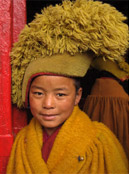
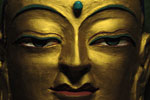
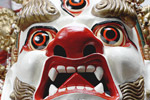
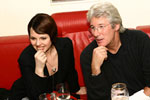
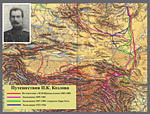
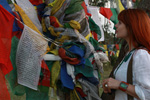
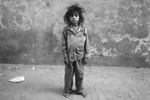
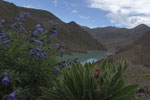

 Tibetan region is spread in the highest Himalayan Mountains . In middle ages it was a powerful kingdom, which controlled Great Silk Road and contributed much to the worldwide culture. The initiator of Tibetan medicine is 32 nd king of Tibet Trisong Detsen Gampo (617- 649). His both wives – Chinese and Nepalese princesses – were from Buddhist countries and converted to Buddhism their husband – the king of Tibet . During the reign of this king Tibetan written language appeared and translation of medicine books in Tibetan language started. In this way, Tibetan medicine adopted the knowledge about diseases and their medical treatment from the books of Indian medical treatment science Ayurveda, and the art of pulse diagnostics and the teaching of five elements – from Chinese medicine. Also Tibetan medicine was influences by Greek-Roman and Arabian medicine.
Tibetan region is spread in the highest Himalayan Mountains . In middle ages it was a powerful kingdom, which controlled Great Silk Road and contributed much to the worldwide culture. The initiator of Tibetan medicine is 32 nd king of Tibet Trisong Detsen Gampo (617- 649). His both wives – Chinese and Nepalese princesses – were from Buddhist countries and converted to Buddhism their husband – the king of Tibet . During the reign of this king Tibetan written language appeared and translation of medicine books in Tibetan language started. In this way, Tibetan medicine adopted the knowledge about diseases and their medical treatment from the books of Indian medical treatment science Ayurveda, and the art of pulse diagnostics and the teaching of five elements – from Chinese medicine. Also Tibetan medicine was influences by Greek-Roman and Arabian medicine.